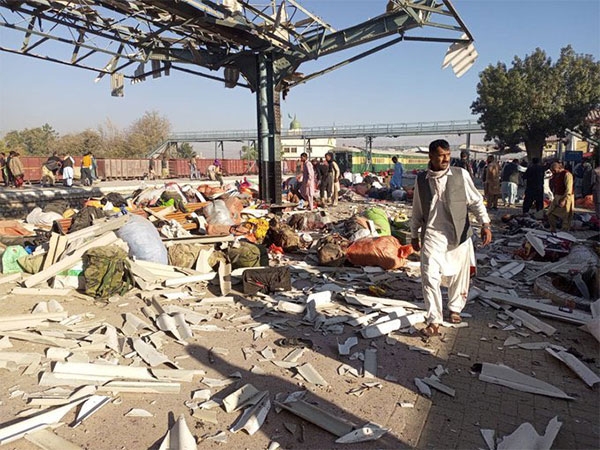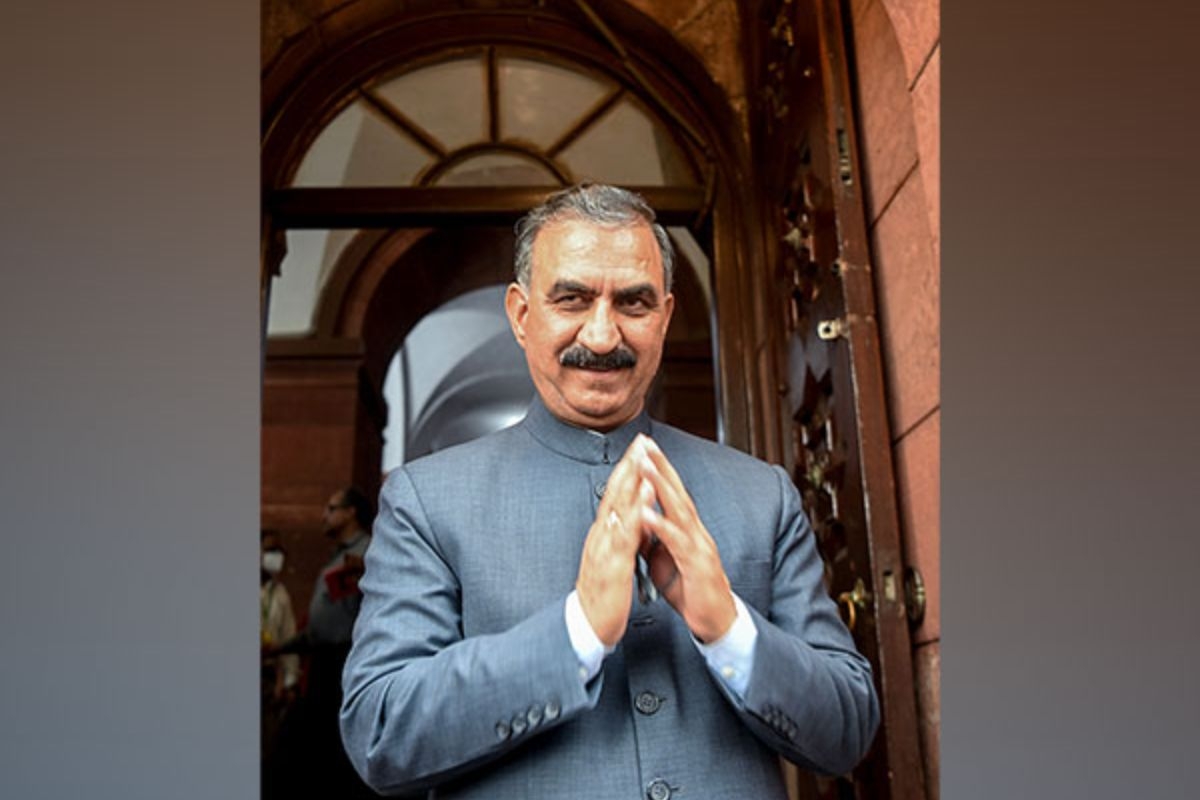
The term 'jungle-raj' is often associated with Bihar, especially when the rule of RJD chief Lalu Yadav and his wife Rabri Devi is recalled. This term is back in the news these days ahead of the 2015 Bihar assembly elections.
Why?
The term jungle-raj wasn't used much after Nitish Kumar took over Bihar as its chief minister. But the term has made a come back with political rivals claiming that Bihar will have to witness another jungle-raj if the 'Mahagathbandhan' (Lalu-Nitish-Sonia) government is formed.
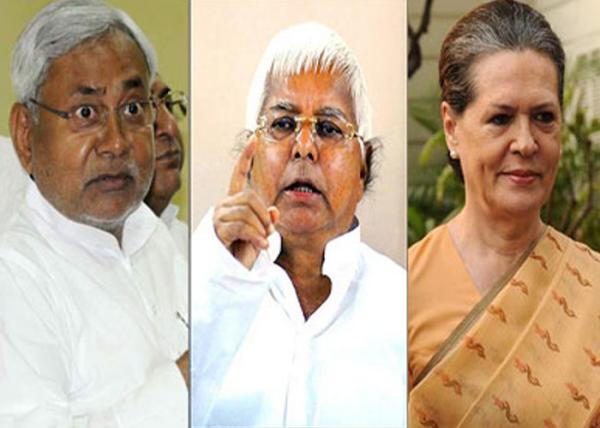
Photo: Patrika
Even Prime Minister Narendra Modi had stated that Lalu's RJD is 'Rojana Jungle-raj ka Darr' instead of Rashtriya Janta Dal (RJD).
What is jungle-raj?
Jungle-raj refers to a criminalised nexus of politicians, government officials, businessmen and other entities.
This criminalised nexus is responsible for illegal activities to be committed a sustained fashion, sometimes openly, and mostly with the use of violent intimidation.
In Bihar, jungle-raj means enormous corruption, kidnapping, and crime.
Lalu, Rabri and jungle-raj (Sahib, Biwi aur gangsters)
If the Lalu-Rabri era has been termed as jungle-raj, then it isn't wrong. The social environment in Bihar during their reign was horrific.
It is said that the upswing of Lalu Prasad Yadav started after the death of veteran socialist leader Karpuri Thakur. Lalu became the leader of Opposition in the Bihar assembly in 1989 and became the chief minister the same year.
The rise of Lalu saw an enormous rise in criminal activities in the state too. It is alleged that the most notorious criminal activities were organised and carried out by his brother-in-laws Sadhu and Subhash Yadav. The duo had even assumed pivotal political roles.
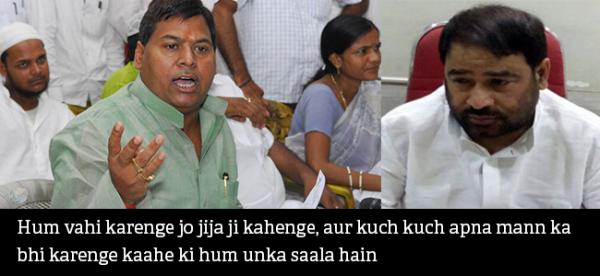
Photo: Biharphotos/Prashant Ravi, Illustration: Shoumik Biswas/Catchnews
Sadhu and Subhash were referred as S2 during this time and their names had become synonymous with hooliganism. It is also alleged that Lalu also used muscle power to remain in power; his muscle men Shahabuddin, Surajbhan Singh and others came into the limelight and later entered into politics.
The fear invoked by Yadavs' name was such that people had started using their surname, claiming to be distant relatives of Sadhu and Subhash, for extortion.
In 1997, the Fodder scam sparked a huge controversy, and political pressure forced Lalu to step down. The next step he took shocked everyone; he made his traditional housewife, Rabri Devi, the chief minister of Bihar even though Rabri had no interest or previous experience in politics.
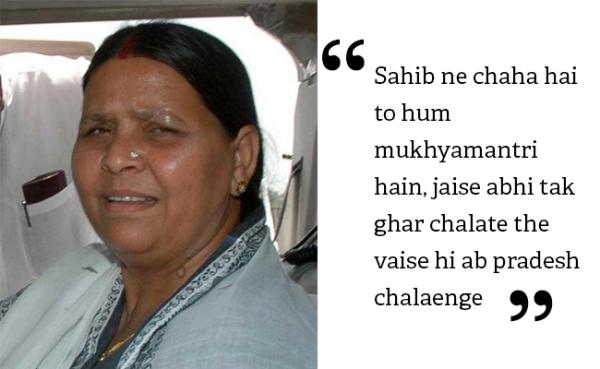
Photo: Getty Images, Illustration: Shoumik Biswas/Catchnews
It was also during this period that there was continuous conflict between the two main castes of Bihar - Bhumihars and Yadavs. The mass massacres such as the ones in Bara, Senari, and Laxmanpur took place during the rule of Lalu-Rabri.
Major crimes of the jungle raj era
Kidnapping
It is said that during the Lalu-Rabri time, the only industry which flourished was that of 'kidnapping'.
Their government put Bihar 30 years back in terms of development in comparison to other states.
This was the time when almost every day, cases of kidnapping were reported from across the state.
Gangs used to kidnap doctors, engineers, and businessmen in broad daylight and they were released only after huge ransoms were paid.
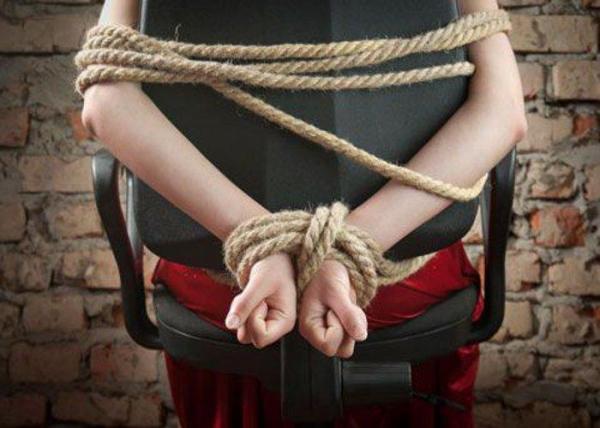
Photo: Patrika
Sadly, sometimes these innocent people were killed even after the ransom money was received.
A survey done by The Times of India had shown that in Bihar, from 1992 to 2004, the total number of reported kidnapping cases was 32,085.
Murders
During the Lalu-Rabri time, a lot of political murders were reported and to make it more worse, children and youth were sucked into the nexus of crime and lost out on education.
It was during this time only that Shahabuddin, a gangster turned politician from Siwan, reached the peak of his 'powers.' It is alleged that he was guilty of numerous murders but Lalu's support for him was so strong that even the state police were scared to file a case against him. It was only when Lalu's power was on the decrease that a case of kidnapping was registered against him in which he was convicted.
Another 'gangster' was Reetlal Yadav who was known to be Lalu's choice to wreak havoc in Patna.
This was the time when people were scared to leave their homes after sunset; they were afraid of either getting kidnapped or murdered.
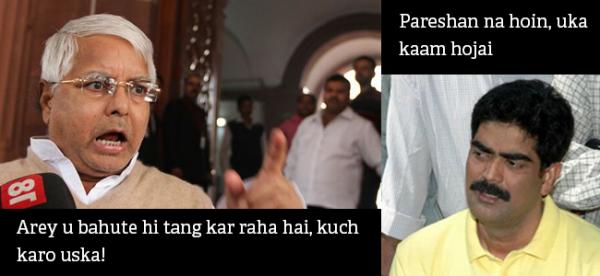
Photo:Biharphotos/ Prashant Ravi, Illustration: Shoumik Biswas/Catchnews
During this period another menace were the clashes between the Ranveer Sena (upper-caste group) and the MCC (lower-caste group) in which hundreds lost their lives.
According to the Bihar Police website, the number of murders during 2001-2005 is 18,189. One can imagine how many murders must have been committed during 1990 to 2000 when nearly 20,000 murders were committed in just five years.
Rangdari Tax
The 'rangdari tax' meant that every time a person started a new business or bought property or a vehicle, it was mandatory that he/she pay a certain amount to the local goons.
It was said that if somebody refused to pay the rangdari tax, the punishment fixed by the goons was death!
Other crimes
There was no kind of crime left which wasn't committed in Bihar during the Lalu-Rabri time. Crimes like dacoity, rape, burglary, bank robbery, riots etc. were part of the daily agenda of criminals.
With all this one can easily conclude why the Lalu-Rabri era is known as the jungle-raj.




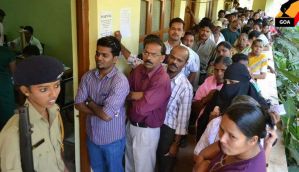



![BJP's Kapil Mishra recreates Shankar Mahadevan’s ‘Breathless’ song to highlight Delhi pollution [WATCH] BJP's Kapil Mishra recreates Shankar Mahadevan’s ‘Breathless’ song to highlight Delhi pollution [WATCH]](https://images.catchnews.com/upload/2022/11/03/kapil-mishra_240884_300x172.png)

![Anupam Kher shares pictures of his toned body on 67th birthday [MUST SEE] Anupam Kher shares pictures of his toned body on 67th birthday [MUST SEE]](https://images.catchnews.com/upload/2022/03/07/Anupam_kher_231145_300x172.jpg)


